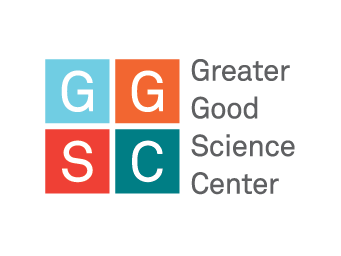Click to give with GreaterGood
Plus email open rates, LinkedIn influencers and identity resolution.

Democratizing philanthropy with Greatergood
Online charitable retailer Greatergood.com introduced click-to-give micro-donations over two decades ago. In the click-to-give model, users click a (virtual) button for their charity of choice and an advertiser or sponsor donates to the specified charity. GreaterGood’s cause-focused websites have raised over $ 70 million for organizations supporting people, pets, and the environment.
“With our many types of cause areas combined with the different ways consumers can interact with us, there was no way to scale and provide a cohesive customer experience without leveraging technology,” said Jessica Frost, GreaterGood’s Chief Brand Officer.
GreaterGood’s ability to shift focus as customer behavior, commerce trends, and technology have changed over the past two decades has contributed to their longevity. They now have over a dozen brands and cause areas which include a variety of different donation approaches.
Frost explained the company’s approach as multifaceted. “We have our e-commerce arm, our direct donation arm, and our micro-donation arm which doesn’t require users to give anything. It democratizes philanthropy in a way that’s accessible to everyone. We also have a publishing and petition arm. All of this falls under a family of websites that include GreaterGood,” she said.
Did you think open rates would drop?
With Apple’s iOS 15 now an available update for all iPhones, marketers should be on the lookout for changes in their email open rate data. Or, you might just want to stop looking at them altogether.
Apple’s iOS 15 allows users to opt in to its Mail Privacy Protection feature, which essentially blocks email senders from being able to see information on how those users interact with emails. What’s ironic, though, is that the feature could cause open rates to inflate, not drop.
“Any subscriber that uses an Apple mail client with MPP will have their email images prefetched and cached, causing those emails to register as ‘opened,’ even if the recipient did not physically open the email,” said email company Validity in a statement last week. “This will have a significant, sweeping impact on the industry, as Validity data shows that Apple dominates email client usage at about 40%. In addition, marketers will lose the ability to track device and location data from these pixels as well.”
It’s interesting that Validity is saying that since many marketers are suggesting that their peers move away from open rates as a key performance indicator.
“In essence, open rates are a vanity metric,” said Frank Brooks, Head of EMEA Marketing at Dotdigital, speaking at MarTech Conference (free registration required). “Recipients flicking through that email may count as an open when actually the fact is they haven’t engaged with you at all and barely even looked at your email.”
Give your business a face on LinkedIn
Adopting a soft sales technique on LinkedIn can grow your network, and ultimately sales, according to Darryl Praill, CRO for sales engagement software company VanillaSoft.
“You’ve got your marketing or your sales list of people you’re trying to target,” Praill said, “but that’s just the people you know of. The fact is there’s thousands of people out there who could buy your products or services, or influence the purchase of your products or services.”
Chances are, those prospects and influencers are on LinkedIn. The platform has close to 740 million active users, and in Q2 ‘21 increased year-over-year in sessions (30%) and conversations (48%).
“It’s not just about the content,” said Praill. “You need to grow your network.”
Business audiences respond to branding and personality, in part because B2B businesses now market on social media, like consumer brands. On LinkedIn, marketers can emphasize personal connections by showcasing individuality.
“I went to my CEO three months into my job and said we have a great corporate page, and we’re on LinkedIn, Twitter, Facebook, etc,” Prail explained. “But we don’t have a face of the company, and people buy from people. So we need a corporate evangelist.”
This way, buyers don’t just think about your company as a faceless entity. They have a face to associate the brand with and personalize the connection.
The benefits of using identity resolution platforms
Connecting consumer identifiers has become a mandate for enterprise marketers trying to meet and exceed customer expectations for a consistent and personalized brand experience.
Automating the process with an identity resolution platform can provide the following benefits:
- Deeper customer insights. Piecing together data signals from multiple data sources and interactions enables marketers to build more robust customer profiles. Knowing the customer at a more granular level can help drive rich customer insights that enhance campaign targeting, personalization and relevance.
- Personalization accuracy. Better personalization is a primary marketing use case for many identity resolution platforms, which create a consistent set of identifiers to fuel personalized interactions. If you don’t know with confidence who your customer is, you can’t personalize your messages or experiences.
- More seamless customer experiences. Automated identity resolution allows marketing organizations to create a unified view of customers, which can be communicated and deployed across brands, business units and product lines. Recognizing customers across every step of the customer journey reduces waste by eliminating duplicate contacts, and enhances their experiences by enabling interactions in the right channel at the right time.
- Stronger privacy Governance, Risk and Compliance (GRC). Effective identity resolution supports your organization’s commitment to data governance and, ultimately, consumer trust in your brand. Using an identity resolution platform makes customer preference management (including opting out), as well as regulatory and corporate policy compliance easier and more comprehensive.
- Enhanced cross-channel attribution and campaign tracking. Persistent IDs that identify customers (both known and anonymous) across channels enables more accurate, closedloop measurement and multi-touch attribution.
- Improved marketing ROI. Identity graphs reduce data overlap and duplication, resulting in more efficient spending on campaigns that work. Conversely, not knowing who your customers are leads to misidentifying them and engaging in ways they may perceive to be intrusive or irrelevant.
Quote of the day
“Nobody had a better COVID glow up than QR codes.” Tyler Samani-Sprunk, Co-Founder & CMO at Simple Strat
The post Click to give with GreaterGood: Thursday’s Daily Brief appeared first on MarTech.
(33)


